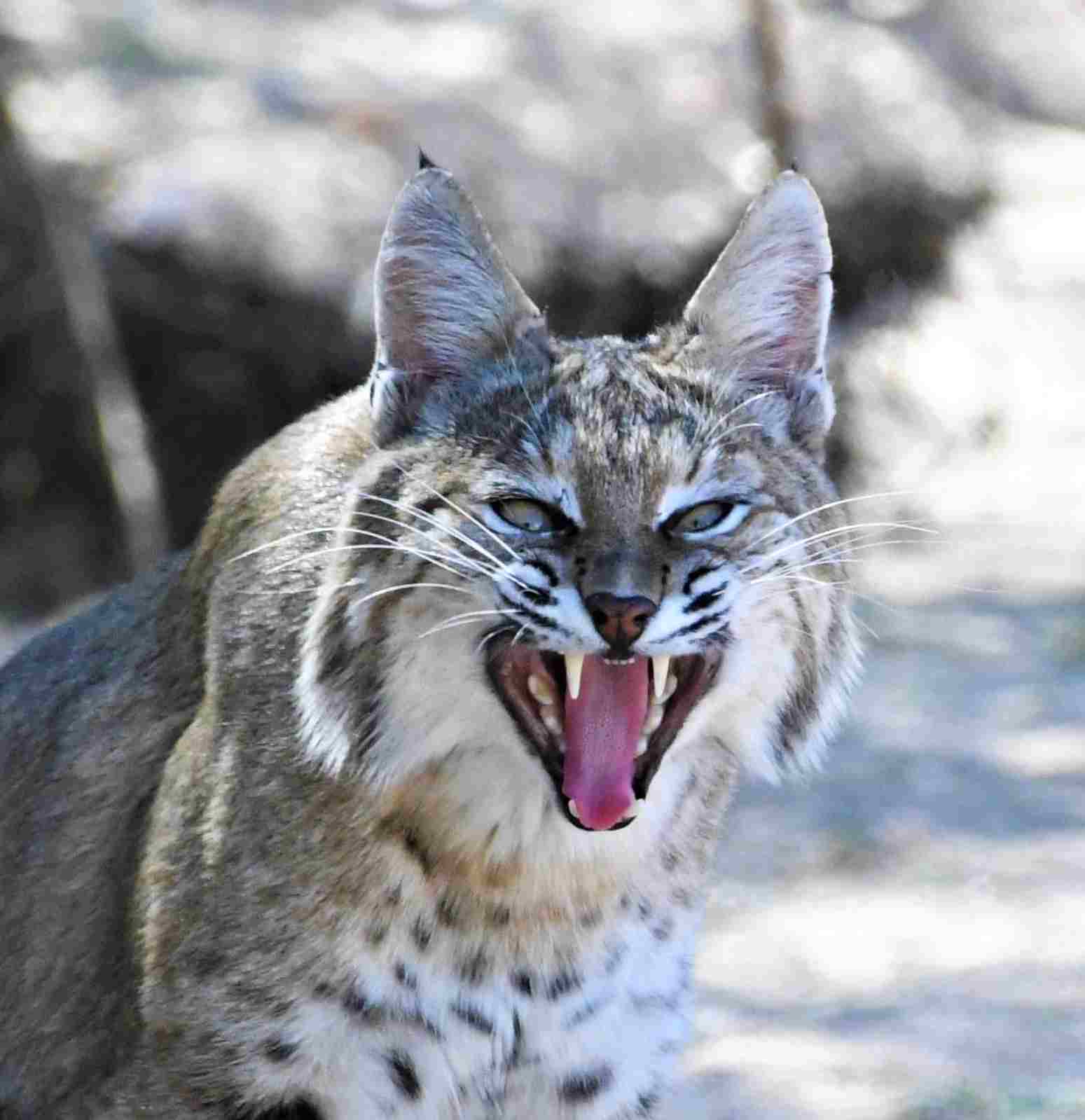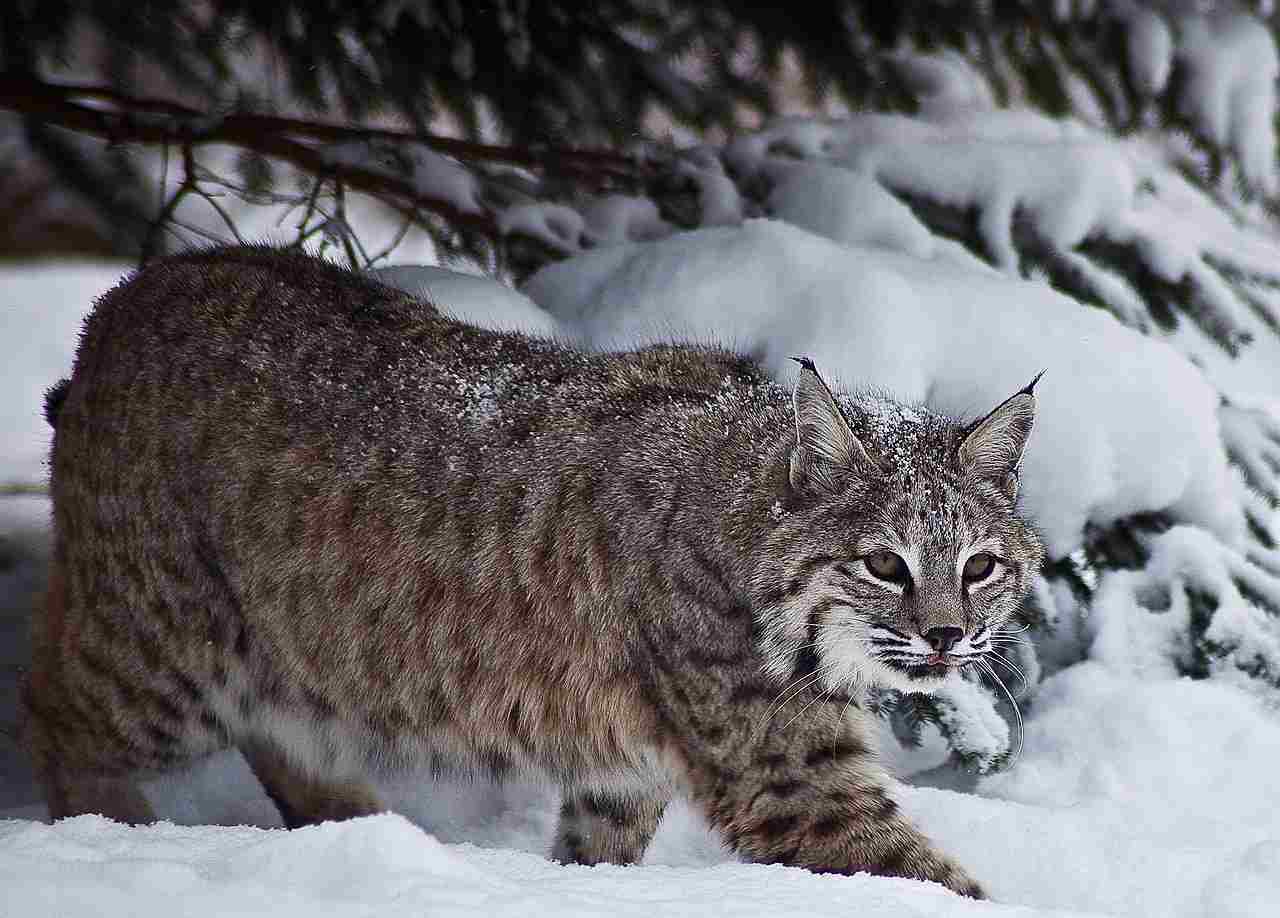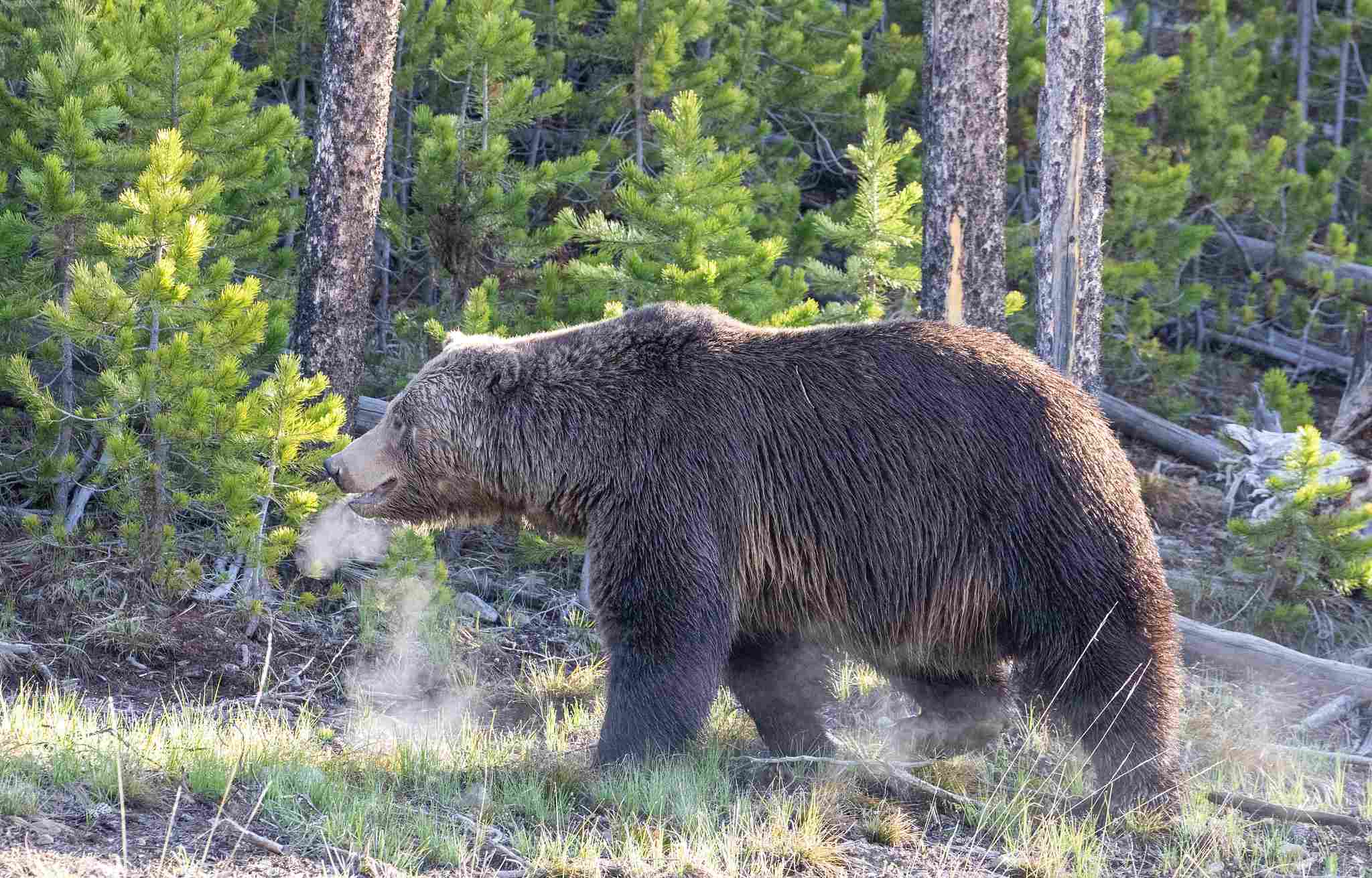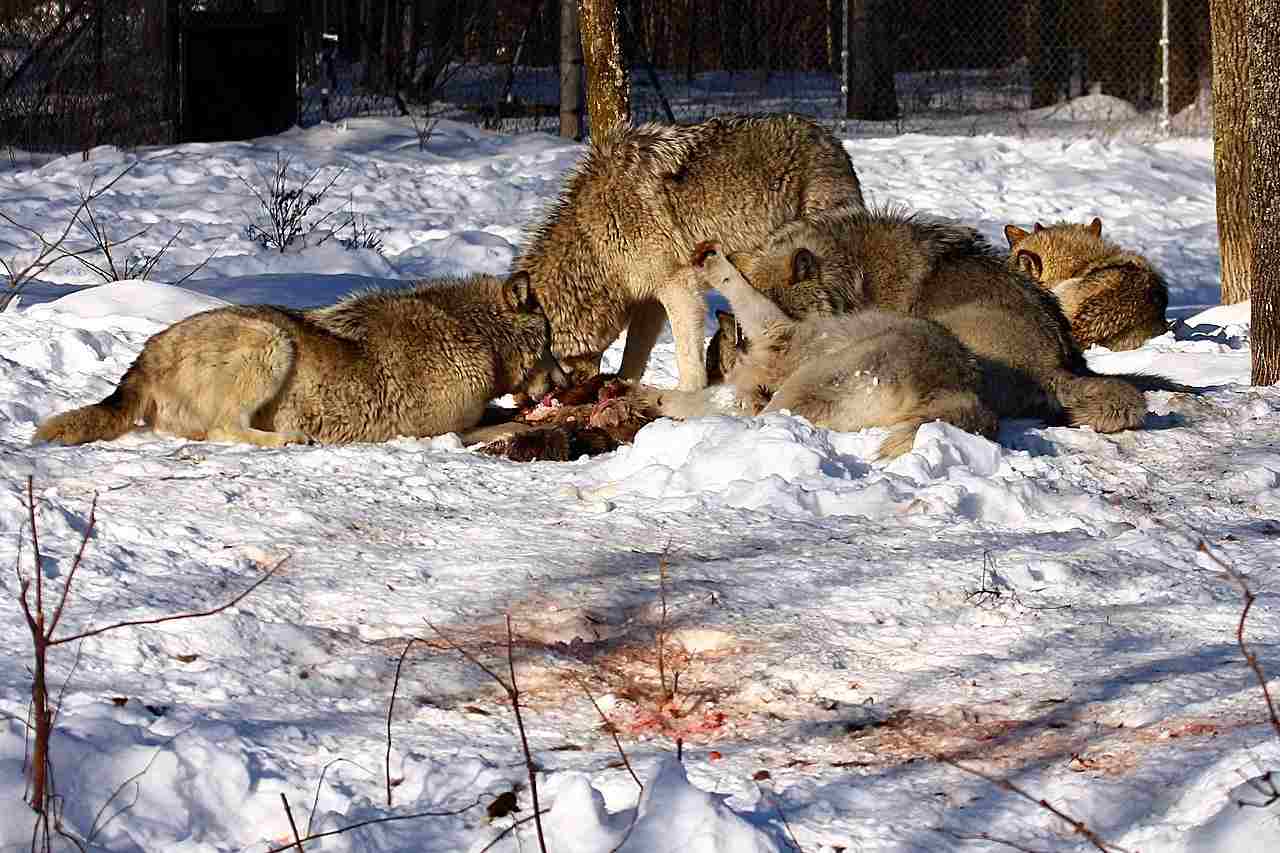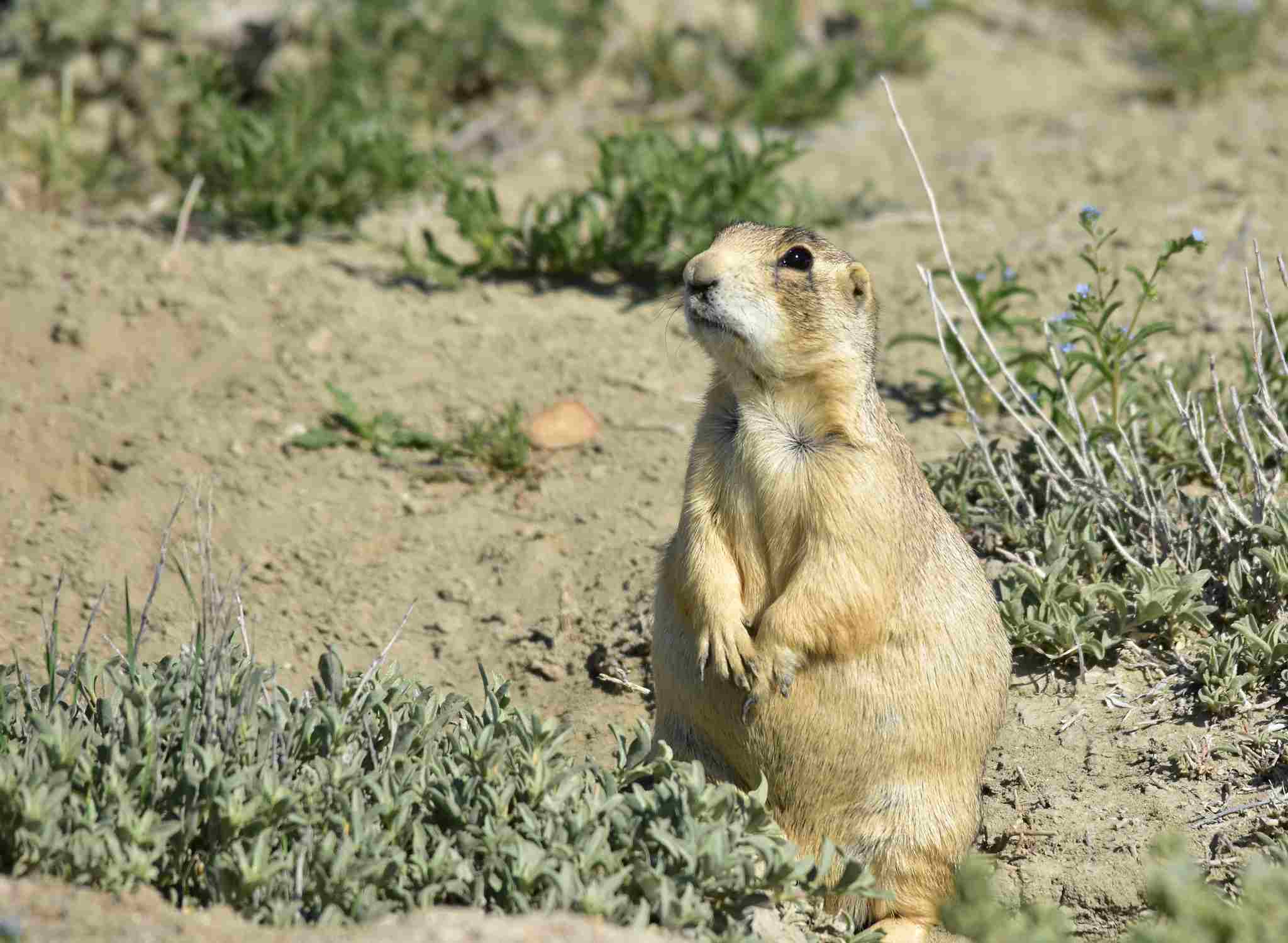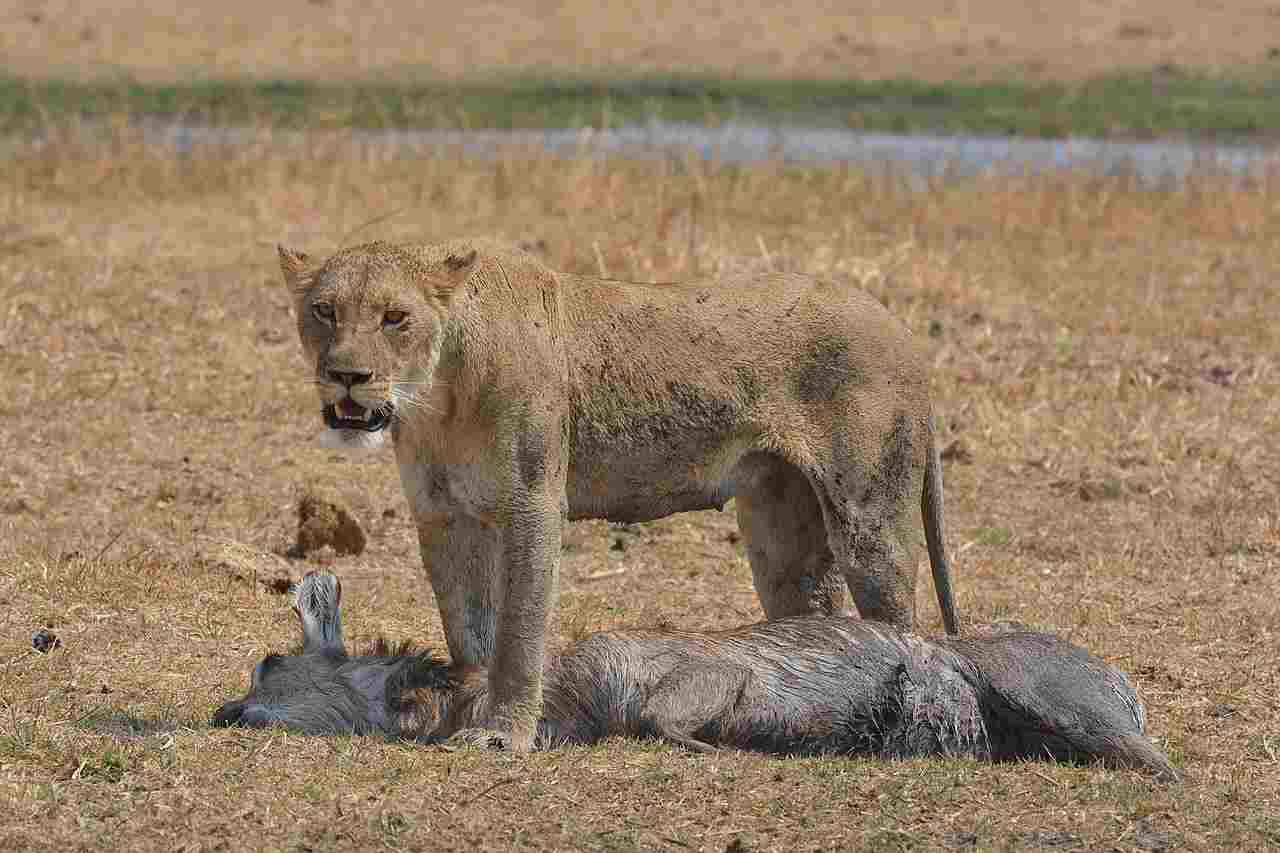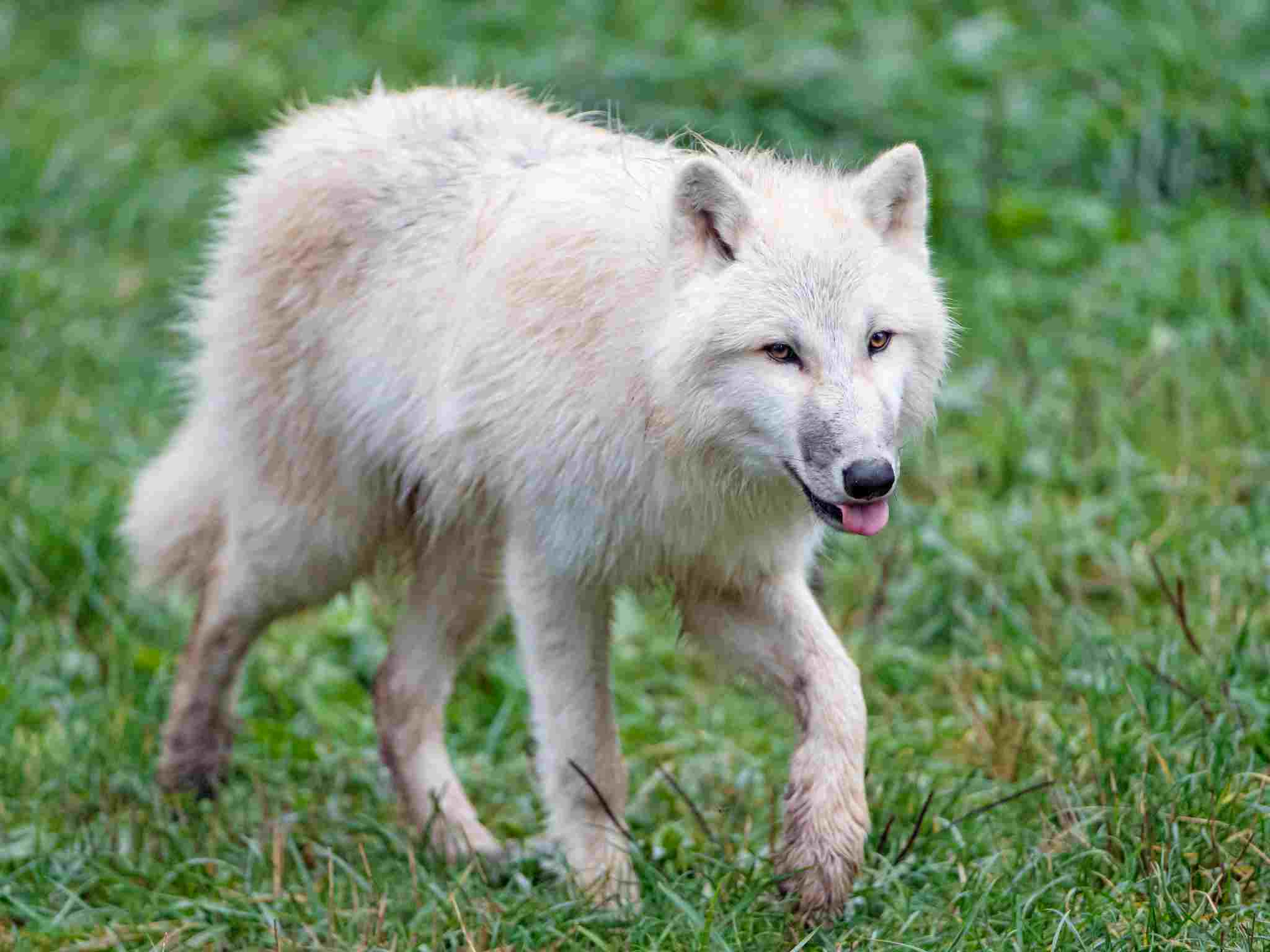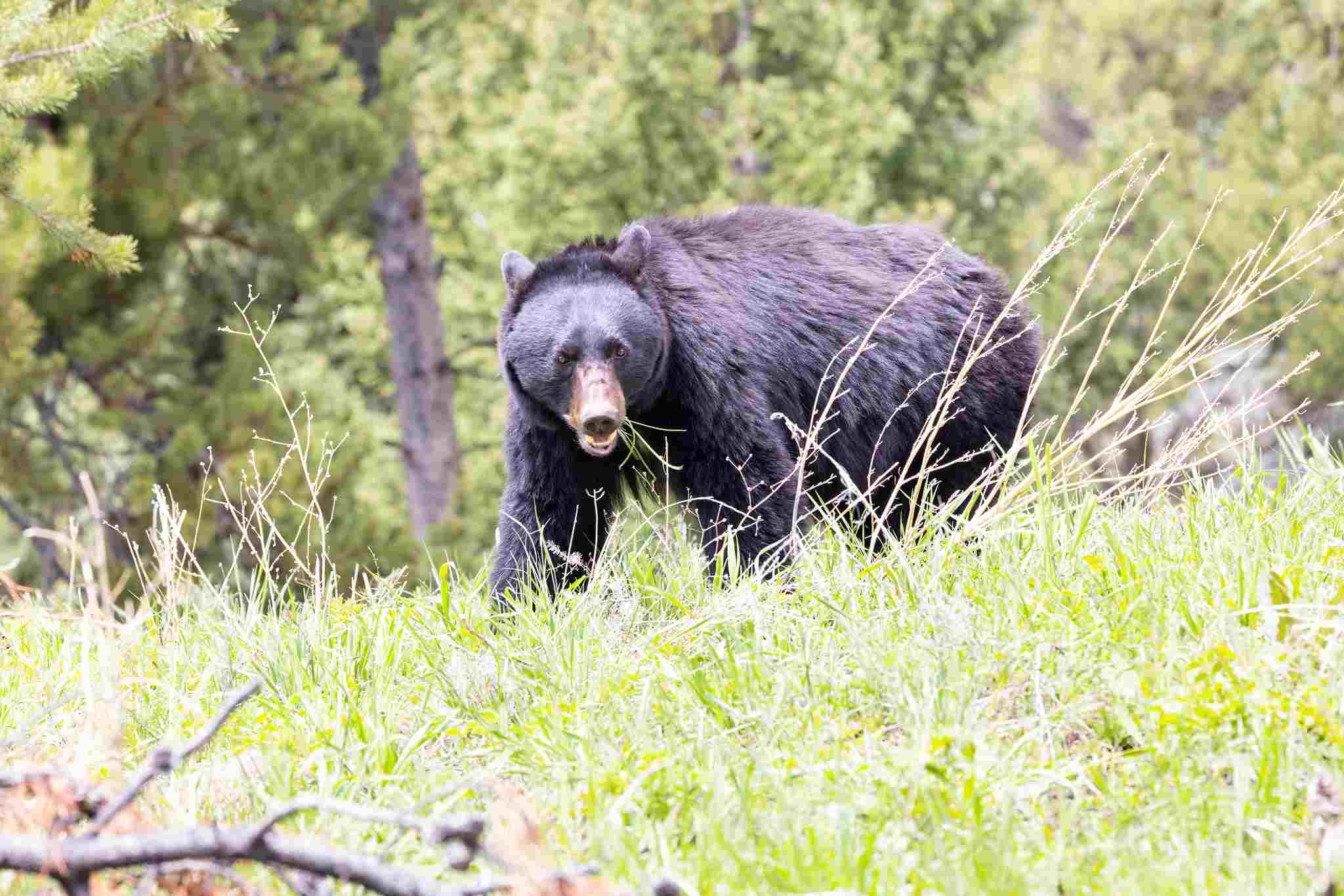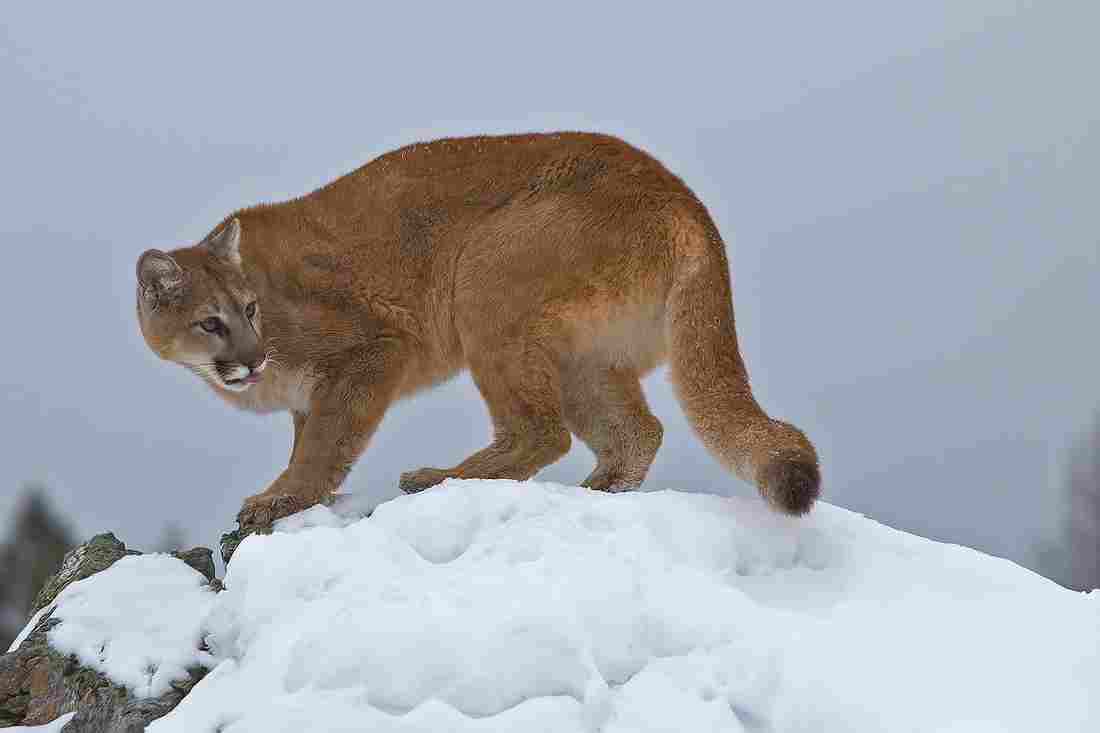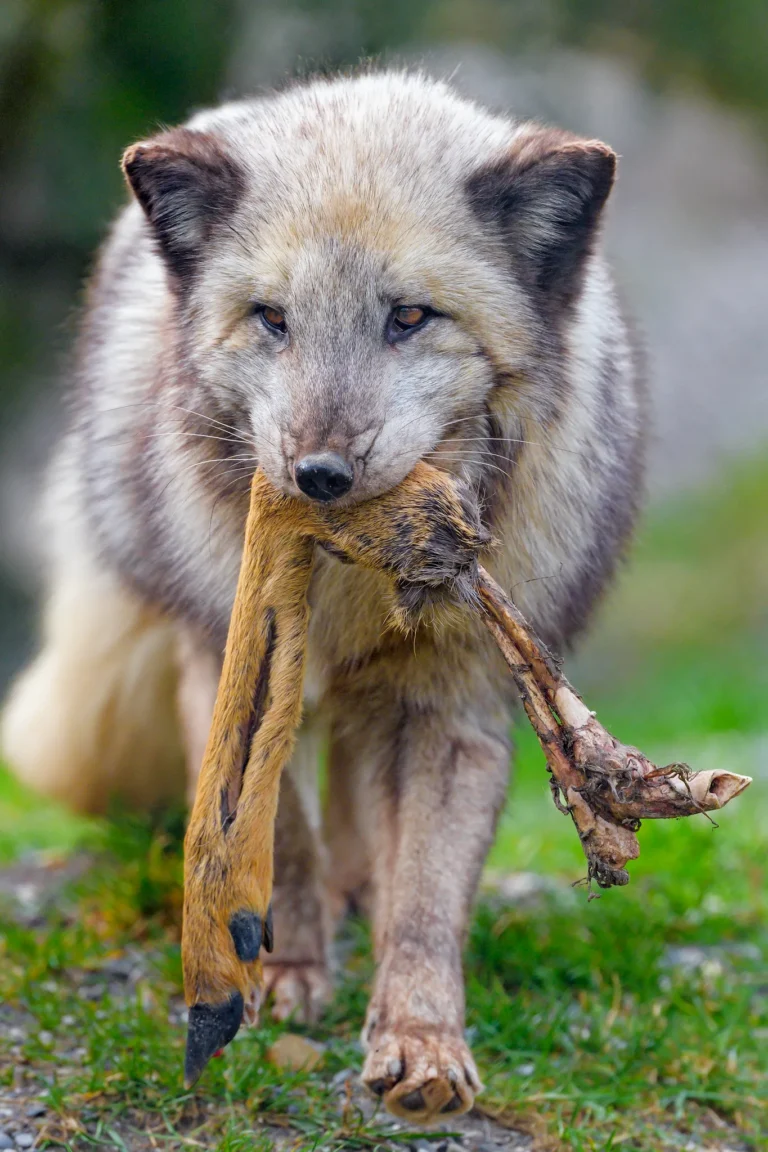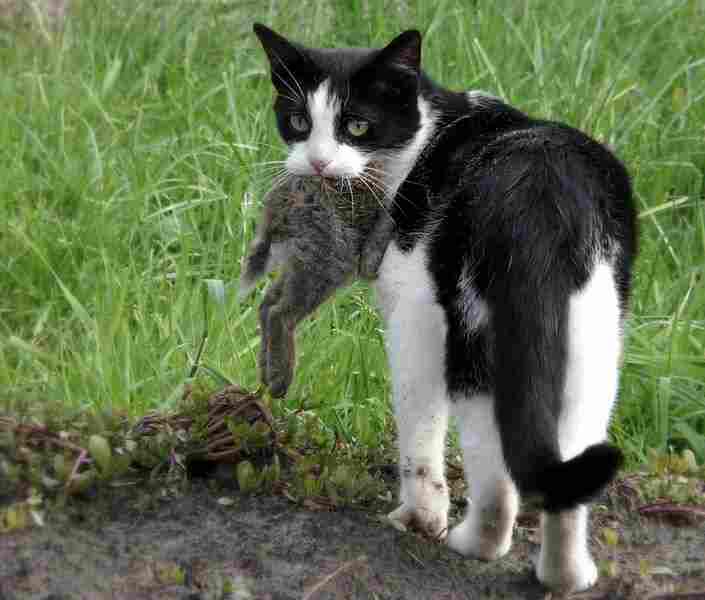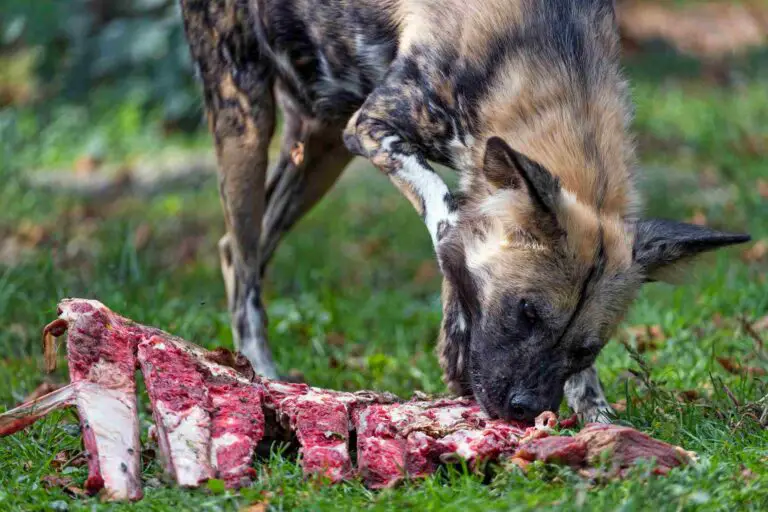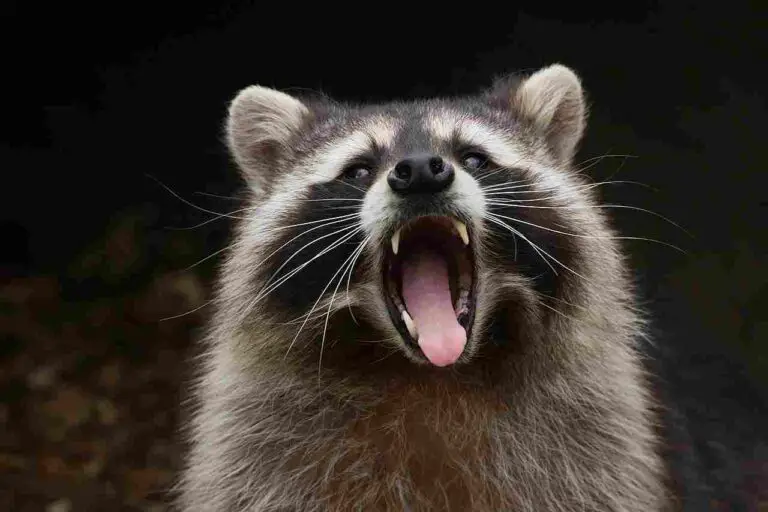11+ Carnivores in Yellowstone National Park Discussed
Carnivores in Yellowstone National Park are essential components of its ecosystem, playing crucial roles in regulating prey populations and maintaining ecological balance. These carnivores include grizzly bears, Canada lynx, wolves, bobcats, mountain lions, badgers, prairie rattlesnakes, garter snakes, bull snakes, ospreys, weasels, and bladderworts. Despite their diversity, they face threats such as habitat loss, human-wildlife conflicts, and competition with invasive species, highlighting the importance of conservation efforts to protect their habitats and ensure their survival in the park.
1. Grizzly Bear
Grizzly bears are iconic carnivores in Yellowstone National Park, symbolizing the wild and rugged nature of the area. These massive omnivores are top predators, playing a crucial role in maintaining the park’s ecosystem balance. With their hulking size and formidable strength, grizzlies are formidable hunters, preying on a variety of animals including elk, deer, and smaller mammals.
Despite their powerful hunting abilities, grizzly bears are also scavengers, often feeding on carrion and scavenging leftovers from other predators’ kills. Their omnivorous diet includes plants, roots, berries, and insects, especially during the spring and summer months when these food sources are abundant.
In Yellowstone, grizzly bears are a symbol of conservation success. Once threatened with extinction, efforts to protect and manage their populations have led to a remarkable recovery. However, they still face challenges such as habitat loss, conflicts with humans, and competition with other predators like wolves. As a result, ongoing conservation efforts are essential to ensure the long-term survival of these magnificent creatures in Yellowstone and beyond.
2. Canada Lynx
The Canada lynx is a stealthy and elusive carnivore that inhabits the forests of Yellowstone National Park. Recognizable by its distinctive tufted ears and thick fur, the lynx is a specialized predator, primarily hunting snowshoe hares as its main prey. With its keen senses and excellent camouflage, the lynx stalks its prey through the dense undergrowth, using its agility and quick reflexes to catch its quarry.
In Yellowstone, the Canada lynx is a symbol of the park’s diverse and dynamic ecosystem. As a top predator, the lynx helps regulate the population of its prey species, contributing to the overall health and balance of the forest ecosystem. However, like many carnivores, the lynx faces challenges such as habitat loss, fragmentation, and declining prey populations, which threaten its long-term survival in the park.
Efforts to protect and conserve the Canada lynx and its habitat are critical for maintaining the ecological integrity of Yellowstone National Park. By preserving the forests and ensuring the availability of suitable habitat and prey, conservationists can help ensure the continued presence of this iconic carnivore in the park for generations to come.
3. Wolf
Wolves are iconic apex predators that play a crucial role in the ecological dynamics of Yellowstone National Park. Once extirpated from the region due to human persecution, wolves were successfully reintroduced to the park in the mid-1990s, sparking a cascade of ecological changes known as trophic cascades. As top predators, wolves primarily hunt large ungulates such as elk, deer, and bison, helping regulate their populations and promoting ecosystem health.
In Yellowstone, wolves are highly social animals, living in tight-knit family groups known as packs. These packs cooperate in hunting and raising their young, demonstrating complex social behaviors and communication. Their presence has led to a more balanced distribution of prey species, benefiting other wildlife and even shaping the physical landscape through their hunting patterns.
However, the reintroduction of wolves has also sparked controversy and conflicts with local communities, particularly over livestock predation and hunting regulations. Despite these challenges, the restoration of wolves to Yellowstone serves as a powerful example of the importance of apex predators in maintaining healthy ecosystems and underscores the need for ongoing conservation efforts to protect these magnificent animals and their habitats.
4. Bobcat
The bobcat is a stealthy and adaptable carnivore found throughout the diverse habitats of Yellowstone National Park. With its distinctive spotted coat and tufted ears, the bobcat is a skilled hunter, preying on a variety of small mammals, birds, and occasionally larger prey such as deer and pronghorn fawns. Bobcats are solitary animals, typically hunting alone and marking their territories with scent markings and scratches on trees.
In Yellowstone, bobcats play a vital role in controlling rodent populations and maintaining the balance of the park’s ecosystem. Their hunting behavior helps regulate prey populations and prevents overgrazing, which can have cascading effects on vegetation and other wildlife species. Despite their adaptability, bobcats face threats such as habitat loss, fragmentation, and conflicts with humans, including trapping and vehicle collisions.
Conservation efforts aimed at preserving the diverse habitats of Yellowstone National Park benefit bobcats and other wildlife species that rely on intact ecosystems for their survival. By protecting their habitats and minimizing human disturbances, conservationists can help ensure the continued presence of bobcats in the park for future generations to enjoy.
5. Mountain Lion
The mountain lion, also known as cougar or puma, is a powerful and elusive carnivore that roams the rugged landscapes of Yellowstone National Park. With its muscular build, keen senses, and remarkable agility, the mountain lion is an apex predator capable of taking down prey much larger than itself, including deer, elk, and bighorn sheep.
In Yellowstone, mountain lions are solitary animals, maintaining large home ranges that they patrol in search of prey. Their secretive nature and low population densities make them rarely seen by park visitors, adding to their mystique and allure. Despite their elusive behavior, mountain lions play a vital role in regulating prey populations and shaping the dynamics of the park’s ecosystem.
Like many carnivores, mountain lions face threats such as habitat loss, fragmentation, and conflicts with humans, including livestock predation and vehicle collisions. Conservation efforts aimed at preserving their habitats and minimizing human disturbances are essential for ensuring the long-term survival of mountain lions in Yellowstone National Park.
As a symbol of wildness and resilience, the mountain lion embodies the spirit of Yellowstone and serves as a reminder of the importance of protecting and conserving the park’s rich biodiversity for future generations to enjoy.
6. Badger
The badger is a tenacious and solitary carnivore that inhabits the grasslands and sagebrush habitats of Yellowstone National Park. Recognizable by its distinctive black and white facial markings and powerful digging claws, the badger is an adept hunter, preying on small mammals such as ground squirrels, rabbits, and rodents. With its strong sense of smell and digging prowess, the badger excavates burrows and dens where it ambushes its prey.
In Yellowstone, badgers play a vital role in controlling rodent populations and shaping the structure of the grassland ecosystem. Their digging behavior aerates the soil and creates habitat for other species, contributing to the overall health and diversity of the ecosystem. Despite their importance, badgers face threats such as habitat loss, fragmentation, and vehicle collisions, which can impact their populations.
Conservation efforts aimed at preserving the grassland and sagebrush habitats of Yellowstone National Park benefit badgers and other wildlife species that rely on these ecosystems for their survival. By protecting their habitats and minimizing human disturbances, conservationists can help ensure the continued presence of badgers in the park for future generations to appreciate.
7. Prairie Rattlesnake
The prairie rattlesnake is a venomous predator that inhabits the rocky outcrops and grasslands of Yellowstone National Park. With its distinctive diamond-shaped pattern and rattling tail, the prairie rattlesnake serves as a reminder of the park’s diverse and dynamic ecosystem. As an ambush predator, the rattlesnake preys on small mammals such as mice, ground squirrels, and birds, using its venomous bite to immobilize its prey.
In Yellowstone, prairie rattlesnakes play a crucial role in controlling rodent populations and shaping the structure of the grassland ecosystem. Their presence helps maintain the balance of predator-prey relationships and contributes to the overall health and diversity of the ecosystem. Despite their importance, rattlesnakes face threats such as habitat loss, fragmentation, and persecution by humans, including intentional killing and road mortality.
Conservation efforts aimed at preserving the habitats and minimizing human disturbances are essential for ensuring the long-term survival of prairie rattlesnakes in Yellowstone National Park. By educating visitors about the importance of these misunderstood creatures and implementing measures to protect their habitats, conservationists can help ensure their continued presence in the park for future generations to appreciate and study.
8. Garter Snake
The garter snake is a common and harmless carnivore found in a variety of habitats throughout Yellowstone National Park. With its distinctive striped pattern and slender body, the garter snake is well-adapted to its environment, blending in with the surrounding vegetation. As opportunistic hunters, garter snakes prey on a variety of small animals, including insects, amphibians, and small mammals.
In Yellowstone, garter snakes play a role in controlling insect populations and serving as prey for larger predators such as birds of prey and carnivorous mammals. Their presence contributes to the overall biodiversity of the park’s ecosystem and helps maintain ecological balance. Despite their importance, garter snakes face threats such as habitat loss, pollution, and predation by invasive species.
Conservation efforts aimed at preserving the diverse habitats of Yellowstone National Park benefit garter snakes and other wildlife species that rely on intact ecosystems for their survival. By protecting their habitats and minimizing human disturbances, conservationists can help ensure the continued presence of garter snakes in the park for future generations to appreciate and study.
9. Bull Snake
The bull snake, also known as the gopher snake, is a non-venomous carnivore that inhabits the grasslands and shrublands of Yellowstone National Park. With its robust body and distinctive blotched pattern, the bull snake is a formidable predator, preying on a variety of small mammals such as rodents, rabbits, and ground squirrels. Despite its size, the bull snake is a docile creature and poses no threat to humans.
In Yellowstone, bull snakes play a role in controlling rodent populations and shaping the structure of the grassland ecosystem. Their presence helps maintain the balance of predator-prey relationships and contributes to the overall health and diversity of the ecosystem. Despite their importance, bull snakes face threats such as habitat loss, fragmentation, and persecution by humans, including intentional killing and road mortality.
Conservation efforts aimed at preserving the grassland and shrubland habitats of Yellowstone National Park benefit bull snakes and other wildlife species that rely on these ecosystems for their survival. By protecting their habitats and minimizing human disturbances, conservationists can help ensure the continued presence of bull snakes in the park for future generations to appreciate and study.
10. Osprey
The osprey is a magnificent carnivore that inhabits the lakes and rivers of Yellowstone National Park. With its distinctive white head, brown body, and wingspan of up to six feet, the osprey is a formidable hunter, preying primarily on fish. Using its sharp talons and keen eyesight, the osprey dives from great heights into the water to catch its prey with precision.
In Yellowstone, ospreys play a crucial role in controlling fish populations and serving as indicators of ecosystem health. Their presence is a testament to the park’s pristine aquatic habitats and abundance of fish species. Despite their importance, ospreys face threats such as habitat degradation, pollution, and human disturbance, which can impact their breeding success and survival.
Conservation efforts aimed at preserving the lakes and rivers of Yellowstone National Park benefit ospreys and other wildlife species that rely on these aquatic ecosystems for their survival. By protecting their habitats and minimizing human disturbances, conservationists can help ensure the continued presence of ospreys in the park for future generations to appreciate and study.
11. Weasel
The weasel is a small but agile carnivore found in the diverse habitats of Yellowstone National Park. With its sleek body, short legs, and long slender neck, the weasel is well-suited for hunting in tight spaces and burrows. Despite its diminutive size, the weasel is a voracious predator, preying on a variety of small mammals, birds, and insects.
In Yellowstone, weasels play a role in controlling rodent populations and shaping the structure of the park’s ecosystem. Their hunting behavior helps regulate prey populations and prevent overgrazing, which can have cascading effects on vegetation and other wildlife species. Despite their importance, weasels face threats such as habitat loss, fragmentation, and competition with invasive species.
Conservation efforts aimed at preserving the diverse habitats of Yellowstone National Park benefit weasels and other wildlife species that rely on intact ecosystems for their survival. By protecting their habitats and minimizing human disturbances, conservationists can help ensure the continued presence of weasels in the park for future generations to appreciate and study.
12. Bladderwort
The bladderwort is a unique carnivorous plant found in the wetlands and aquatic habitats of Yellowstone National Park. With its tiny bladder-like traps and delicate yellow flowers, the bladderwort is a fascinating example of the diversity of life in the park’s ecosystems. As a carnivorous plant, the bladderwort captures and digests small aquatic organisms such as insects and larvae.
In Yellowstone, bladderworts play a role in controlling insect populations and serving as indicators of wetland health. Their presence is a testament to the park’s rich biodiversity and the importance of protecting its delicate ecosystems. Despite their importance, bladderworts face threats such as habitat loss, pollution, and invasive species, which can disrupt their delicate balance.
Conservation efforts aimed at preserving the wetlands and aquatic habitats of Yellowstone National Park benefit bladderworts and other plant and animal species that rely on these ecosystems for their survival. By protecting their habitats and minimizing human disturbances, conservationists can help ensure the continued presence of bladderworts in the park for future generations to appreciate and study.
*Summary
Grizzly Bear
Iconic carnivore, symbolizes Yellowstone’s wilderness
Top predator, hunts elk, deer, scavenges carrion
Conservation success story but faces threats like habitat loss
Canada Lynx
Elusive predator, hunts snowshoe hares
Important for ecosystem balance, faces habitat loss
Wolf
Key predator, regulates ungulate populations
Social animals, reintroduction success, but face conflicts
Bobcat
Stealthy hunter, controls rodent populations
Adaptability crucial, faces habitat loss and fragmentation
Mountain Lion
Apex predator, hunts deer and elk
Solitary, vital for ecosystem balance, faces habitat loss
Badger
Tenacious hunter, controls rodent populations
Important for grassland ecosystem, faces habitat loss
Prairie Rattlesnake
Venomous predator, controls rodent populations
Vital for grassland ecosystem, faces persecution
Garter Snake
Common predator, controls insect populations
Faces habitat loss, pollution, and predation
Bull Snake
Non-venomous predator, controls rodent populations
Important for grassland ecosystem, faces habitat loss
Osprey
Fish predator, indicator of aquatic ecosystem health
Faces habitat degradation, pollution, and disturbance
Weasel
Agile predator, controls rodent populations
Faces habitat loss, fragmentation, and competition
Bladderwort
Carnivorous plant, controls insect populations
Indicator of wetland health, faces habitat loss and pollution
| Carnivore | Key Points |
| Grizzly Bear |
Iconic symbol of Yellowstone, top predator, faces habitat loss and conservation challenges
|
| Canada Lynx |
Elusive hunter of snowshoe hares, vital for ecosystem balance, threatened by habitat loss
|
| Wolf |
Regulates ungulate populations, social animals, reintroduction success but face conflicts
|
| Bobcat |
Stealthy rodent controller, adaptable but faces habitat loss and fragmentation
|
| Mountain Lion |
Apex predator, vital for balance, faces habitat loss and human conflicts
|
| Badger |
Tenacious rodent controller, crucial for grassland ecosystem, threatened by habitat loss
|
| Prairie Rattlesnake |
Venomous predator, controls rodents, important for grasslands, faces persecution
|
| Garter Snake |
Common insect predator, faces habitat loss, pollution, and predation
|
| Bull Snake |
Non-venomous rodent controller, crucial for grassland ecosystems, threatened by habitat loss
|
| Osprey |
Fish predator, indicator of aquatic ecosystem health, threatened by habitat degradation and pollution
|
| Weasel |
Agile rodent controller, faces habitat loss, fragmentation, and competition
|
| Bladderwort |
Carnivorous plant, controls insects, indicator of wetland health, threatened by habitat loss and pollution
|
Related FAQs
1. Why are carnivores important in Yellowstone National Park?
- Carnivores play a crucial role in maintaining the balance of Yellowstone’s ecosystem by controlling prey populations and shaping their behavior. They also help regulate the health of plant communities and contribute to overall biodiversity.
2. What are the main threats facing carnivores in Yellowstone National Park?
- Carnivores in Yellowstone face threats such as habitat loss, fragmentation, human-wildlife conflicts, and competition with invasive species. Additionally, factors like climate change and disease can also impact carnivore populations.
3. How does Yellowstone National Park manage conflicts between carnivores and humans?
- Yellowstone employs various strategies to manage conflicts between carnivores and humans, including educational programs for visitors, implementing regulations to reduce human-wildlife interactions, and research to understand carnivore behavior and ecology.
4. What efforts are in place to conserve carnivores in Yellowstone National Park?
- Conservation efforts in Yellowstone focus on protecting habitat, minimizing human disturbances, monitoring carnivore populations, and conducting research to better understand their ecology and behavior. Collaborative efforts involving park management, conservation organizations, and local communities are also essential.
5. How can visitors help protect carnivores in Yellowstone National Park?
- Visitors can contribute to carnivore conservation by following park regulations, respecting wildlife viewing guidelines, properly disposing of trash to prevent habituation, reporting wildlife sightings responsibly, and supporting conservation initiatives through donations or volunteering.
